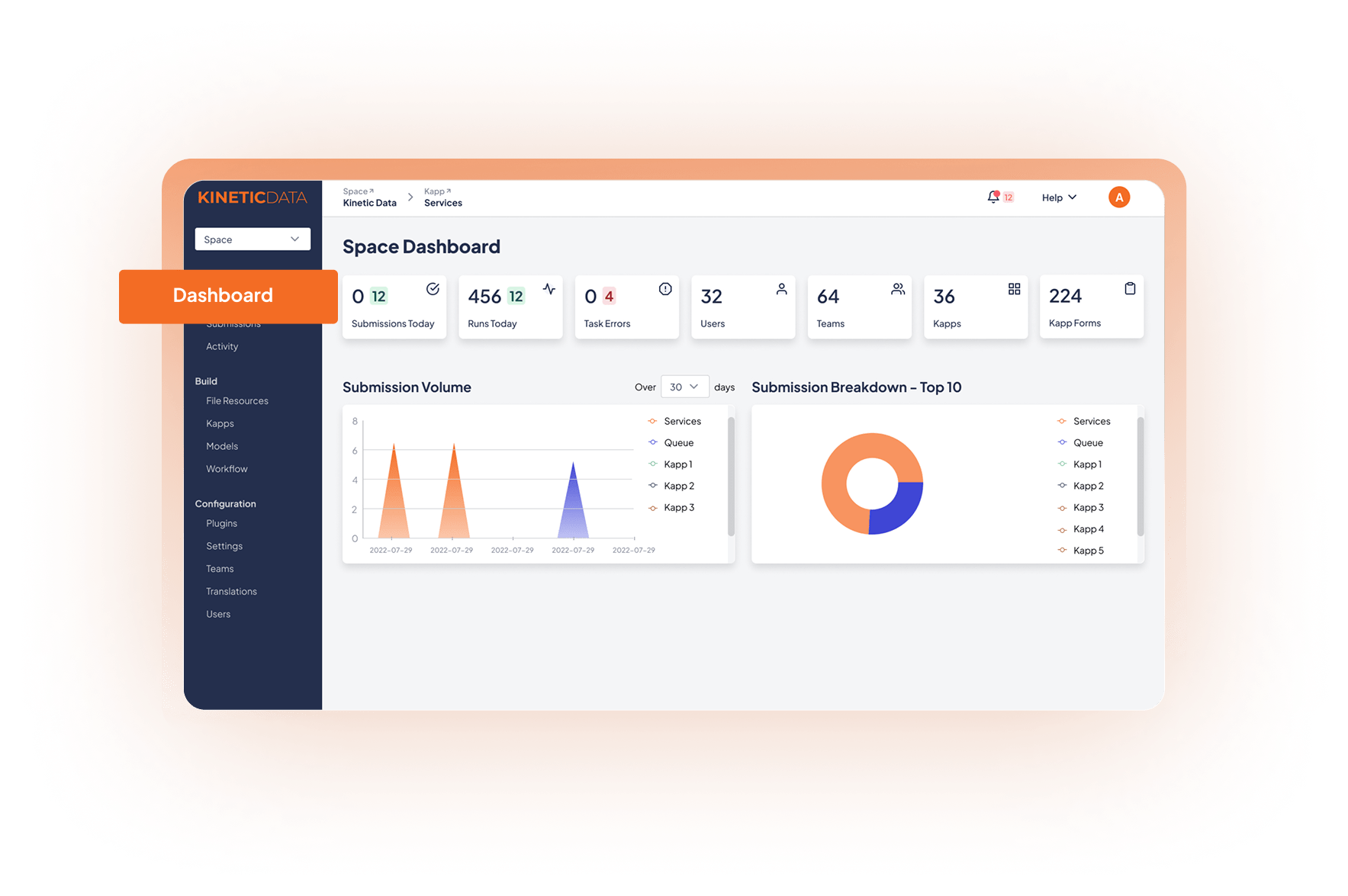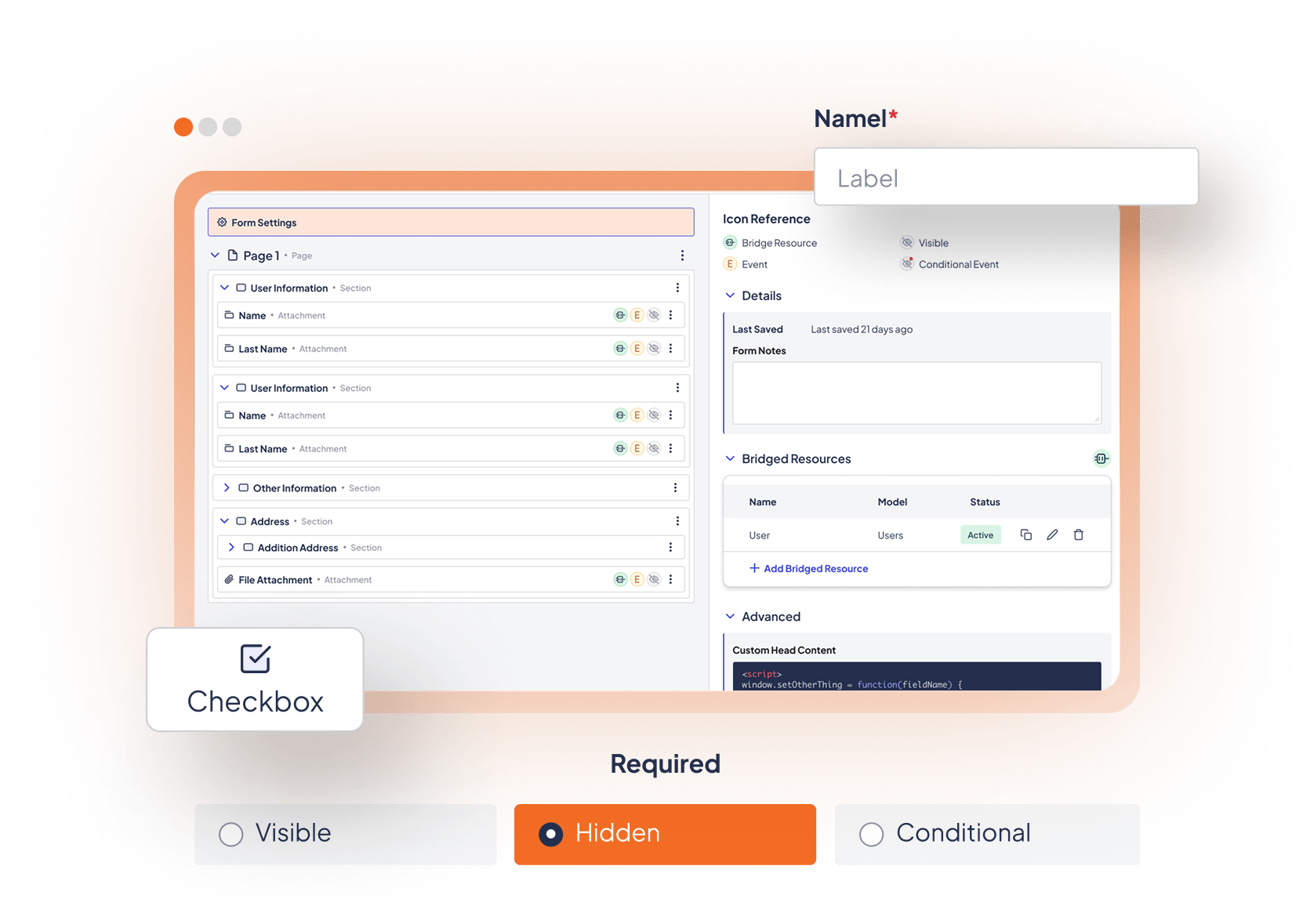The Kinetic Platform's layered architecture lets you connect systems, design experiences, and orchestrate processes—without replatforming or losing governance.
Kinetic's architecture is the backbone of Business Process Reimagined. It delivers the flexibility of a modern, composable stack with the security and control enterprises demand. By separating experience, process, and technology layers, Kinetic gives organizations the freedom to innovate while maintaining structure and compliance.


